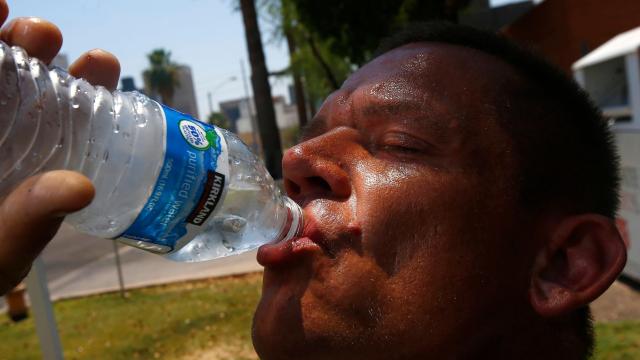It’s getting hot in here — so hot that vulnerable people around the world are soon going to be pushed out of regions where humans have flourished for years. In a new study published Monday in the journal Nature Sustainability, researchers find that about 2 billion people will be at risk of extreme heat by the beginning of the next century.
The study looked at areas of the world that are currently livable for people that may not be suitable for human life in a few decades. This area is described in the research as a “climate niche” — a region where the average temperature is 13 degrees Celsius (55 degrees Fahrenheit). Historically, economic growth, agriculture, and livestock are more likely to be stable in regions of the world that are within or close to that niche.
But, as temperatures rise too much above that, stability declines. Currently, about 9% of the world, which amounts to about 600 million people, have been pushed outside of that niche because of climate change, the study finds.
Current climate policies would result in 2.7 degrees Celsius of warming in the next 80 years. 22%, or about 2 billion people, will be in areas experiencing unsafe heat, researchers wrote. Keeping warming to 1.5 degrees Celsius would significantly decrease the population exposed to those alarming temperatures.
“The costs of global warming are often expressed in financial terms, but our study highlights the phenomenal human cost of failing to tackle the climate emergency,” Tim Lenton, the director of the Global Systems Institute at the University of Exeter and and the study’s co-author, said. “For every 0.1°C of warming above present levels, about 140 million more people will be exposed to dangerous heat.”
The countries that will be most affected by the rise in temperatures are going to be in tropical regions, which is where 40% of the world’s population lives. Countries with high populations and already hot climates, like India and Nigeria, are going to struggle the most, the study said. If temperatures reach an average 29 degrees Celsius (84.2 Fahrenheit), it’ll create several public health challenges. Infectious disease could spread rapidly, maternal health will suffer, and crop yields in affected regions will decrease. Researchers stressed that world leaders should work to significantly reduce greenhouse gas emissions to avoid reaching 2.7 degrees of warming.
We’ve already seen hotter temperatures increasing and changing were once considered historically temperate areas, like the Pacific Northwest. An early season heat wave swept over the region earlier this month. Historically warm places are also seeing dangerous heat too. Earlier this May, Vietnam recorded its hottest temperature ever. And the next few years are expected to be some of the hottest on record, thanks to the formation of El Niño this summer.
“These results highlight the need for more decisive policy action to limit the human costs and inequities of climate change,” the study authors wrote.
